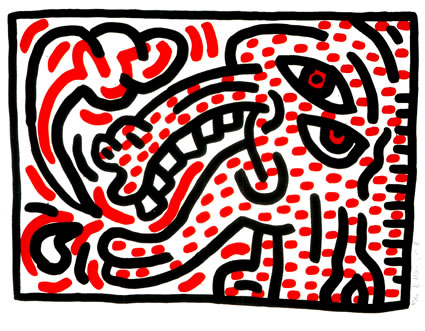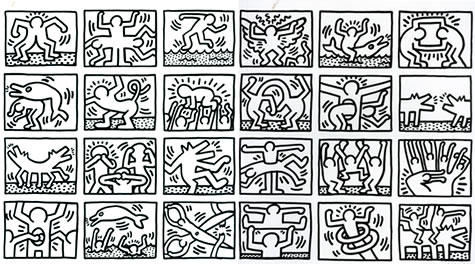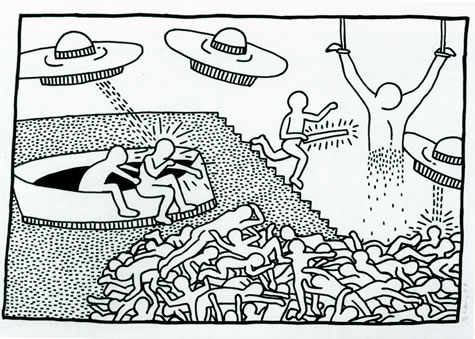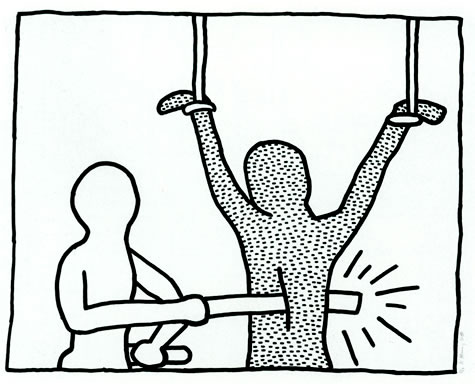In 1985, Keith Haring created a series of untitled lithographs that featured his signature bold lines and themes equally as bold. This lithograph, Lithograph 1/3, depicts a large figure with a phallus of another man, crossing paths with a smaller figure. The image is striking in its graphic violence and sexual overtones and nuanced comedic layers, an element that commonly made Haring’s serious material so universally accessible. In Lithograph ⅓, exaggerated body parts and cartoonish expressions give the scene a surreal quality that merges with an important message about the gravity of the AIDS crisis and its increasingly pronounced impact during the time of the work’s creation.
Facing an international health crisis and an antiquated society with strong views on the matter, Haring, an openly gay man, courageously created a platform for marginalized voices and confronted societal prejudice and institutional abandonment with his artistic activism. The incorporation of the Red Cross symbol, a well-known symbol of humanitarian aid and assistance, makes the association between the work and the public health crisis clear and the usually positive symbol takes on a more heavy connotation as it takes a place separate from the action of the composition.
The interpretation of the lithograph is not entirely unilateral, but it seems to communicate a struggle between the figures with a sense of shock emanating from the larger figure. There is also a metaphor for sexual contact that personifies the illness as a lunging force and evokes a sense of uncertainty and caution that the whole world resonated with at the time . The use of the Red Cross symbol in the artwork emphasizes the theme of health and the urgency of the AIDS crisis, while displaying Haring’s opinion on the “stand by” attitude of government and healthcare towards the issue. Despite the ambiguity, the dauntless and engaging composition conveys a bold and confronting message that challenged society and acted as an extension of Haring’s activism and care for his community.






